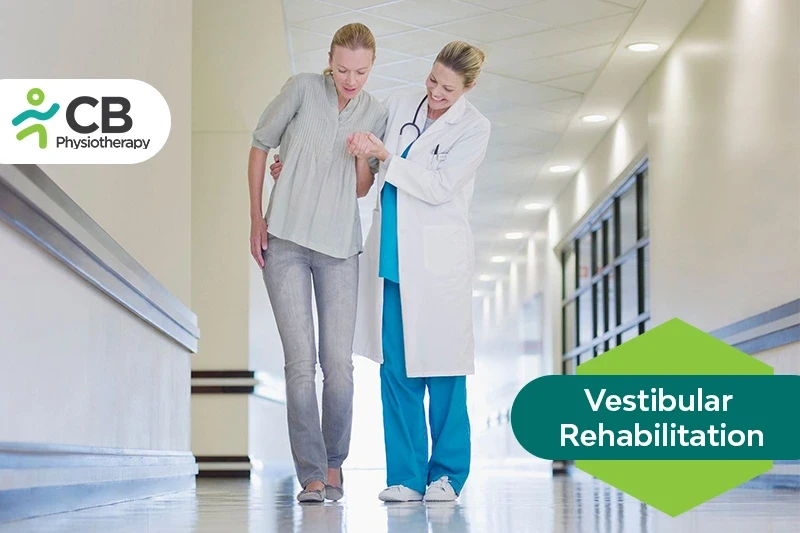
Vestibular rehabilitation (VR), or vestibular rehabilitation therapy (VRT) is a specialized form of therapy intended to alleviate both the primary and secondary problems caused by vestibular disorders. It is an exercise-based program primarily designed to reduce vertigo and dizziness, gaze instability, and/or imbalance and falls. For most people with a vestibular disorder, the deficit is permanent because the amount of restoration of vestibular function is very small. However, after the vestibular system damage, people can feel better and function can return through compensation. This occurs because the brain learns to use other senses (vision and somatosensory, i.e. body sense) to substitute for the deficient vestibular system. The health of particular parts of the nervous system (brainstem and cerebellum, visual, and somatosensory sensations) is important in determining the extent of recovery that can be gained through compensation.
Vestibular rehabilitation has been very promising for people experiencing symptoms of dizziness, pressure in the ear, nausea, ringing in the ears, chronic headaches, or imbalance. In most cases, if patients continue to perform the exercises they have learned, balance, and dizziness problems decrease significantly or completely disappear. Vestibular physical therapy can get you better sooner than you anticipate.
One of the most common Vestibular diagnoses is Benign Paroxysmal Positional Vertigo or BPPV. Physical therapy has been successful in the treatment of BPPV. For BPPV, rehabilitation may require just a few short therapy sessions focused on repositioning maneuvers. However, if the symptoms are related to another diagnosis, the process may take a few weeks of exercises that gradually progress. Most patients will have success with a significant reduction in symptoms or possibly a complete resolution of their symptoms after completing Vestibular physical therapy, and drastically improving their quality of life.
Select your City to find & connect with our experts regarding Physiotherapy for Vestibular Rehabilitation (vr)